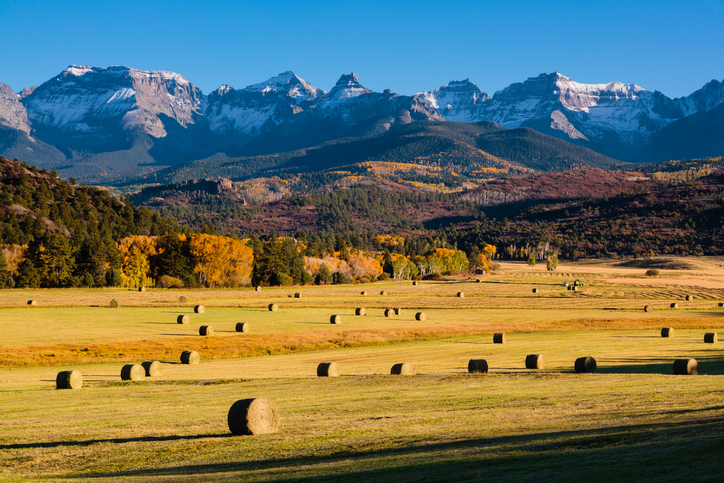Plan Wisely for Next Year’s Harvest
When outsiders think of Colorado, skiing, hiking, and towering mountains probably spring to mind. But Colorado residents know that we’re a big farming state. In fact, about half of the state’s 66 million acres are farm or ranch land, contributing $40 billion and 173,000 jobs to the state economy. And like farmers everywhere, Colorado farmers must negotiate critical variables beyond their control—variables that play a huge role in their annual output.
Colorado farmers depend on accurate weather predictions—expectations of freezes, thaws, and precipitation—to help them plan for the upcoming season. What are the projected frost dates? How long will the growing season be? What crops will this year’s conditions support? When should farmers start their seedlings in warm, sheltered areas? When should they transplant seedlings outdoors? How much water will be available, when?
Even though it’s only November, farmers are already thinking about their 2019 business plans. Several outlets have made early 2019 weather predictions to help farmers plan them wisely.
NOAA Predictions
The National Oceanic and Atmospheric Administration bases its predictions on historic data and ocean patterns (El Nino and La Nina). NOAA predicts that Colorado will have a warm, wet start to winter. But as winter progresses, precipitation stabilizes a bit, with an average to below average amount of snow in the first three months of 2019.
Old Farmer’s Almanac Predictions
The Old Farmer’s Almanac claims an 80% accuracy rate and bases its predictions on an updated version of an astrological formula created by its founder in 1792. The formula incorporates solar activity, weather patterns, and atmospheric conditions.
According to the Old Farmer’s Almanac, Colorado lies in the “intermountain region” and can expect a mild winter, due to El Niño activity.
In the northern part of the state, snowfall should be higher than average, with the snowiest periods in late November, late December, early and late January, mid to late February, and early March. April and May will be colder and slightly drier than normal.
The Almanac predicts that the southern part of the state will see less snow than normal and a dry spring, with higher than average temperatures.
For Denver, the first frost date was predicted as October 3, and the last frost date is predicted as May 4, which yields a growing season of 153 days. You can find a more complete guide to Colorado frost dates here.
Farmer’s Almanac Predictions
The Farmer’s Almanac makes week-by-week predictions a couple of months out.
Regional Planting Guides
Colorado State Extension has a vegetable planting guide and a guide to protecting your plants from unexpected frost and/or extending your growing season.
The Old Farmer’s Almanac has a location-specific online planting calendar, based on frost dates and historic weather data. It includes suggestions for when to start seedlings and when to move your plants outdoors.
How Did 2018 Play Out?
In 2017-2018, NOAA made the most accurate prediction for Colorado, calling the above-average temperatures that started winter and the lack of precipitation that hallmarked it. The Old Farmer’s Almanac predicted a cold winter, with slightly above average snowfall.
Make Sure Your Farm is Properly Insured
Make sure your farm is protected in the event of adverse weather conditions. Talk to an agent about farm insurance today.
Sources
- https://patch.com/colorado/arvada/old-farmers-almanac-makes-winter-2019-predictions-co
- https://www.farmersalmanac.com/long-range-weather-forecast/north-central-us/
- https://unofficialnetworks.com/2018/07/26/noaa-winter-weather-forecast-outlook-for-2018-2019/
- https://localfreshies.com/noaa-vs-farmers-almanac-which-was-right-about-the-2017-18-season/
- https://www.farmflavor.com/colorado-agriculture/

